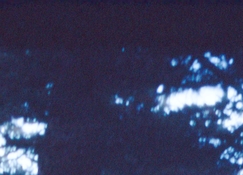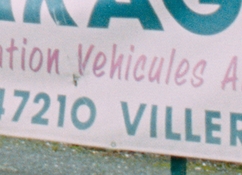Archiloque
Member
I've been using a Minolta 5400 scanner for a few years now. Despite having both top of the line Coolscans at home (the 5000 and 9000), I still believe the Minolta 5400 Mk1 is my best scanner when it comes to extracting as much information as possible from a 35mm negative. I have scanned numerous photos with all these scanners and while the Coolscan tend to have better colors right out of the box, the Minolta 5400 diffuse lighting really give a more pleasing and forgiving image, especially when you have some imperfections on your negatives. Also, its resolution and grain rendition is unmatched.
It is slow, it is a brick. But I really believe it was the pinnacle in terms of image quality when it comes to advanced user scanners for 35mm.
Anyway, after these praises for a 20 years old scanner nobody asked for, here is my problem.
I noticed in dark areas the presence of zigzag artefacts. No matter what value of multisampling I choose, they're still here. I know that Coolscans tend to suffer from the same illness. I have an old Coolscan 4000 that suffers from it. But this issue has been well documented and investigated by the community, and the culprit identified. It's a simple 30 cents capacitor involved in the Analog Digital conversion that needs to be replaced.
Unfortunately, the 5400 doesn't attract the same interest from users nowadays. Sadly, their only appeal seems to be their lens, hence the sheer number of units sold without it on Ebay. Anyway, I was wondering if anyone had any idea of what capacitor or IC chip could be falty ?
Here are two examples. One in the shadows of a slide. Another in the densest highlights of a negative. Click to enlarge :


I plan to have all the chemical capacitors replaced at some point but I wondered if anyone had already encoutered this issue and had some clues. Thanks.
It is slow, it is a brick. But I really believe it was the pinnacle in terms of image quality when it comes to advanced user scanners for 35mm.
Anyway, after these praises for a 20 years old scanner nobody asked for, here is my problem.
I noticed in dark areas the presence of zigzag artefacts. No matter what value of multisampling I choose, they're still here. I know that Coolscans tend to suffer from the same illness. I have an old Coolscan 4000 that suffers from it. But this issue has been well documented and investigated by the community, and the culprit identified. It's a simple 30 cents capacitor involved in the Analog Digital conversion that needs to be replaced.
Unfortunately, the 5400 doesn't attract the same interest from users nowadays. Sadly, their only appeal seems to be their lens, hence the sheer number of units sold without it on Ebay. Anyway, I was wondering if anyone had any idea of what capacitor or IC chip could be falty ?
Here are two examples. One in the shadows of a slide. Another in the densest highlights of a negative. Click to enlarge :


I plan to have all the chemical capacitors replaced at some point but I wondered if anyone had already encoutered this issue and had some clues. Thanks.





 You pay for shipping to and from me, and for parts. I don't need to make any money off it. The risk is also yours, though!
You pay for shipping to and from me, and for parts. I don't need to make any money off it. The risk is also yours, though!